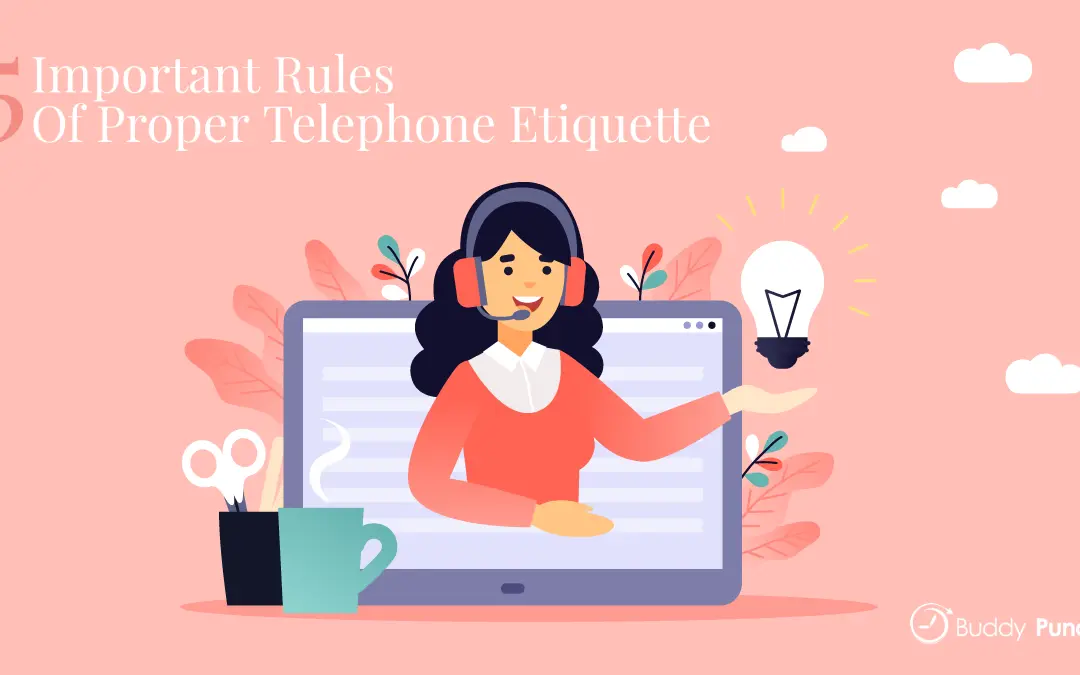5 Important Rules of Proper Telephone Etiquette

While so much communication today is handled online via email or social media, an actual human voice on the other end of the phone line is still an integral part of many businesses. “Make a good first impression” is a common rule of thumb in all walks of life, but especially for a company. The person that answers your business line is the first, and often the most-lasting, contact the caller will have with your business.
Even small things like the inflection of someone’s voice can make a world of difference. The person answering your phones can shape the caller’s entire perception of your company. For this reason, proper phone etiquette is essential to follow.
1. Answer as Quickly as Possible
How quickly, or slowly, you answer a phone call greatly impacts the caller’s perception of your company. In this fast-paced, impatient world, most people will hang up if the phone is not answered after five or six rings. The callers who genuinely need something will be patient enough to wait, but no one who waits through dozens of unanswered rings will be in a good mood
A customer’s first impression of a business who fails to answer their phone promptly is that they are lazy, rude, or do not value the caller’s business. They could also think that your business is disorganized or understaffed. It does not inspire confidence that you will be able to handle their needs. Do not let the phone ring for more than three or four rings before you answer calls.
If there truly is no one available to answer a call, be sure that a professional voicemail is set up to allow the caller to have simple questions answered (e.g., hours, location) or to be connected to a live person as soon as possible. Set this system up throughout your phone lines – for example, if a particular team member can only be reached through extensions, don’t forget to tell them to include a direct phone number in their voicemail for pressing concerns.
And just in case someone found themselves fumbling with their phone, include your company name just to confirm they have the right or wrong number in the first place.
2. Be Prepared
Those answering your phones should be prepared ahead of time. Have a set standardized greeting that everyone uses. Within a few seconds, the caller should know what company they are calling and with whom they are speaking. While it is important to courteous and polite, avoid being too informal – keep things professional.
Having answers readily available to frequently asked questions is wise. You want your staff to come across as knowledgeable about the business and have confidence in their responses. It is not a bad idea to have staff practice their phone etiquette. Things as small as the tone of your voice, facial expressions, and body language can have a huge impact. You also want to limit background noise and give the caller the same amount of attention you would give a friend on a personal call.
3. Connect the Caller to the Proper Person
Very rarely is the person who answers your phone able to answer every question the caller has or solve every issue that was presented. Be sure your employees know how to properly transfer business calls and connect the caller with the correct person that can best help.
Instead of referring to transferring calls as “transferring,” try to use the word “connect” in its place. Callers who are told they need to be transferred often feel like they are just being passed around, and no one appreciates having to explain why they are calling or their problem multiple times. This treatment is very common in the business world, so you automatically get bonus points for a more considerate customer experience.
4. Get Permission to Put Caller on Hold
A caller should only be put on hold as a last resort. If a staff member absolutely cannot take a call, they need to at least politely answer the phone and ask the caller if they can be placed on hold. Most importantly, give the caller the time to respond. Small courtesies like this can go a long way to helping the caller feel more relaxed and willing to wait on hold.
The general rule of thumb is to leave a caller on hold for a wait time less than one minute. If their hold ends up being longer than that, briefly return to the customer on hold and explain the situation and give them an option to continue to hold or to receive a return call.
5. End the Call Properly
Despite being able to help the caller or not, be sure to properly end the call as well. Being polite and courteous is just as important at the end of the call as it is at the beginning. No one wants to feel rushed off the phone or like they are being an inconvenience. Thank them for calling and end the call pleasantly – wish them a pleasant remainder of the day or some other pleasantry. Lastly, be sure the customer hangs up first. You do not want them to think you hung up on them in the middle of their sentence.
For business owners running a call center or using an answering service to address customer calls, make sure you’ve ingrained your team members with these principles. You won’t be able to give each individual call your full attention, and a team that neglects customer needs might get away with it for a long time before negative word of mouth makes its way back to you.
